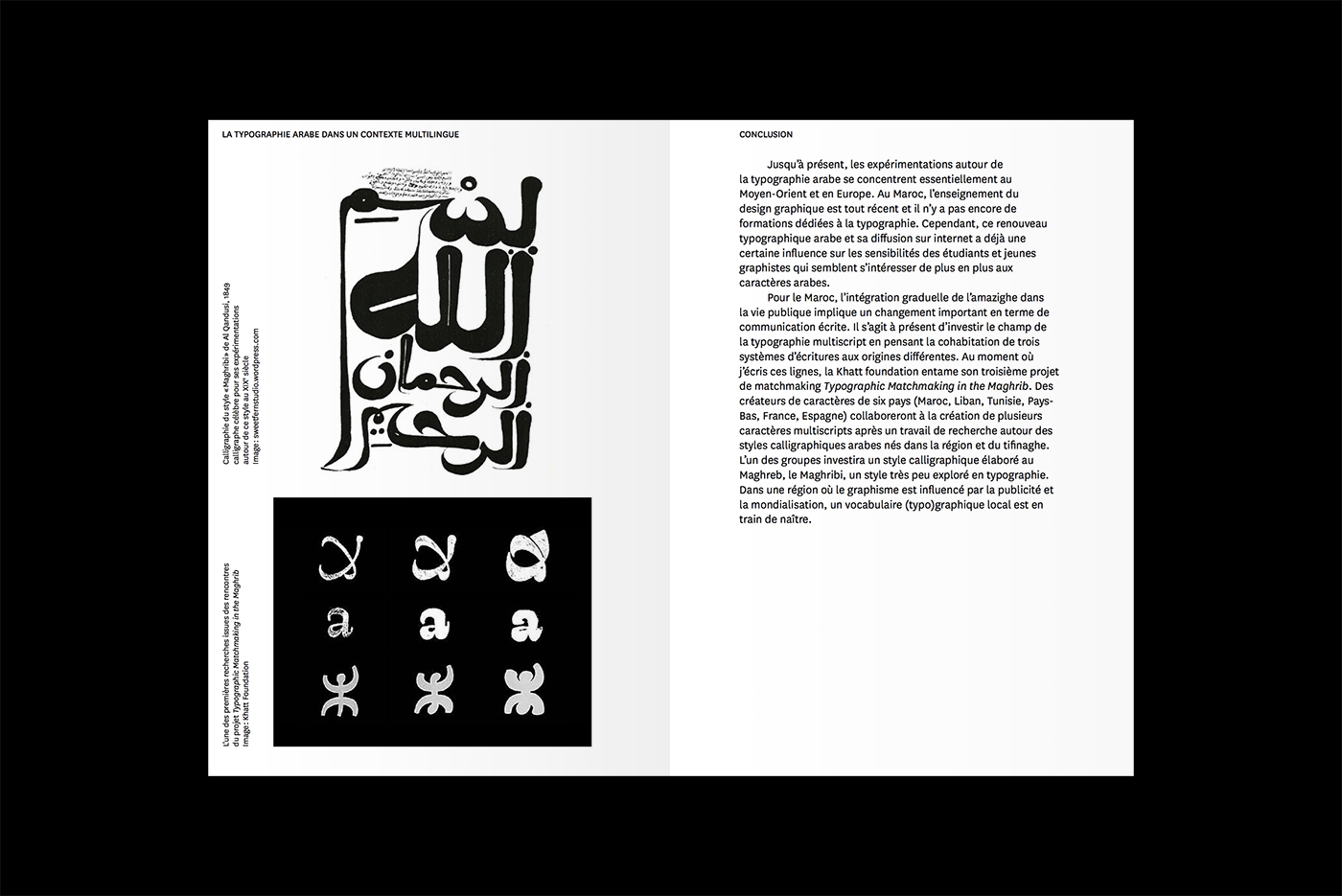”What should an Alef look like?”
Montasser Drissi zoomMultiscript type design holds complex formal challenges. Printing techniques, the pursuit of uniformity and editorial constraints often imply a revision of the established forms. The first Arabic typefaces were seriously constrained by European techniques designed mostly for the Latin script. In a series of adaptations of the Arabic script to the printing press, the typewriter, the Linotype, or to early digital font formats, some basic characteristics of the script were lost on the way and we ended up with new forms. These were often criticised for marking an abrupt breakup with the calligraphic forms used for transcribing texts during centuries. More recently, new font formats and the democratisation of type production software have opened the way for a revision of certain forms that we still associate to Arabic type, even though they resulted from constraints that are now obsolete. A number of typefaces published in the last few years reflect the new approaches type designers are coming up with. This research project aims to explore Arabic type design while taking into consideration current typographic issues and matchmaking challenges, in parallel to an analysis of a selected body of existing typefaces designed and produced at different periods.
